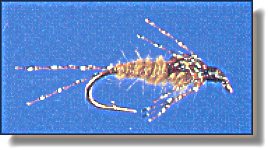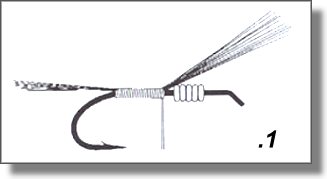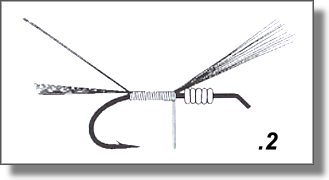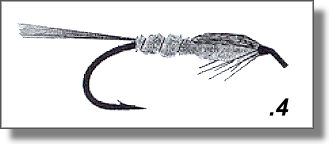
 A.P. Olive Crystal Nymph By Terry Hellekson, Photos by Jim Schollmeyer
|
|
|
|
Tying Instructions:
1. Tie in lead wire at the thorax if you desire your fly to be weighted.
Enough material for the tail, wingcase and legs is tied in just to the rear
of the lead wire. Amount of material needed is determined by the size hook
being used. Material is secured with your thread and surplus which is not
needed to form the tail is trimmed off..
 2. Make a few turns of thread under the tail to lift and spread it and tie in ribbing.

|
|
3. Dub the abdomen and complete the wire ribbing of the abdomen.
 4. Thorax is then dubbed in the same manner as the abdomen except larger. Wingcase is pulled over the thorax and tied in. Legs are formed by bringing the tying thread back to a position just in front of the thorax and separating the material to each side and securing with tying thread. Excess material is then clipped off. ~ Terry Hellekson We thank Frank Amato Publications Inc. for use permission for this excerpt from Fish Flies, Volume One. |